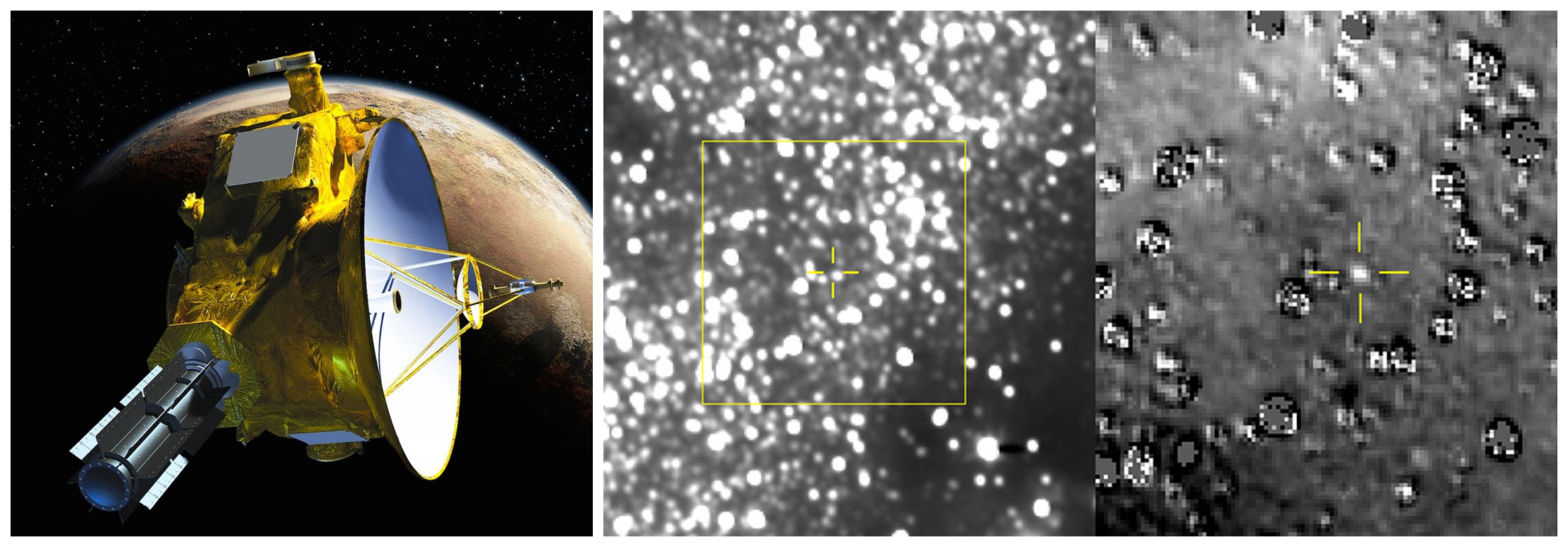| Subject |
Comments |
Views |
Author |
Date Written  |
|
Here's what 6 billion kilometers away from Earth looks like
|
view preview
 At roughly 6 billion kilometers from Earth, the image you see to your right is the farthest images ever taken. The New Horizons spacecraft captured its first images on August 16 of the remote icy world nicknamed Ultima Thule (a traditional name of distant places beyond the known world), confirming that New Horizons is on track for its January 1 flyby around Pluto. With about 160 million kilometers to go — roughly the same distance as Earth is from the sun — the tiny world appears as no more than a faint speck in the probe’s camera. Officially named 2014 MU69, Ultima Thule is part of the Kuiper Belt, a thick disk-shaped zone containing space debris left over from the formation of the planets 4.6 billion years ago. By sending New Horizons to t ...
|
|
|
0 |
1791 |
bio_man |
6 years ago |
|
First human-made object to land on another planet
|
view preview
The Soviet-built space probe, Venera 3, was the first spacecraft to ever land on another planet back on March 1 st, 1966, after being launched on November 16, 1965 from Baikonur, Kazakhstan. The mission of this spacecraft was to land on the Venusian surface. The entry body contained a radio communication system, scientific instruments, electrical power sources, and medallions bearing the State Coat of Arms of the U.S.S.R. Unfortunately, the probe crash-landed on Venus, causing its communication systems to fail before it could return any information about the planet. The spacecraft impacted on the night side of Venus, near the terminator, around -20º to 20º N, 60º to 80º E. The Venera program, however, would go on to successfully submit data f ...
|
|
|
0 |
2616 |
bio_man |
7 years ago |
|
First ever exoplanets discovered outside our galaxy
|
view preview
Using a technique known as gravitational microlensing, Oklahoma University astrophysicists were able to detect several exoplanets within a quasar 6 billion light-years away called RX J1131-1231 (depicted in the illustration above, left). Their research shows that the planets range in size from masses as small as the Moon to ones as great as Jupiter. The idea behind this technique is derived from the Einstein's theory of general relativity. Since light waves bend when they pass through space warped by a large gravitational presence, a planet passing in front of a star can act as a lens to focus the light, creating a temporary sharp increase in a star’s brightness, and changing the apparent position of the star. Currently, it's the only known ...
|
|
|
0 |
1290 |
bio_man |
7 years ago |
|
|
3 |
20693 |
duddy |
9 years ago |
|
Pluto up-close
|
view preview
Taken from a range of just 17 000 km, these images were snapped during the spacecraft's closest approach to Pluto, from its flyby of the dwarf planet in July this year. They document an 80-kilometre strip of the planet's surface, offering an intimate perspective of its cratered, mountainous and glacial terrains. The photos scan from Pluto's jagged horizon about 800 kilometres north-west of the informally named Sputnik Planum, across the al-Idrisi mountains, over the shoreline of Sputnik, and across its icy plains. Source: http://www.abc.net.au/news/2015-12-05/new-pluto-close-ups-to-help-nasa-piece-together-planets-history/7004516 ...
|
|
|
0 |
17477 |
duddy |
9 years ago |
|
|
0 |
18264 |
duddy |
9 years ago |
|
A closer look at Saturn's moon
|
view preview
NASA’s Cassini spacecraft completed the first of three final flybys of Saturn’s icy moon, Enceladus. On October 14, Cassini passed within 1838 kilometers (1142 miles) of Enceladus, providing unprecedented views of the moon’s north polar region. What's more, researchers predict that is contains a global ocean lying beneath its icy crust. Researchers found the magnitude of the moon's very slight wobble, as it orbits Saturn, can only be accounted for if its outer ice shell is not frozen solid to its interior, meaning a global ocean must be present. ...
|
|
|
0 |
3550 |
duddy |
9 years ago |
|